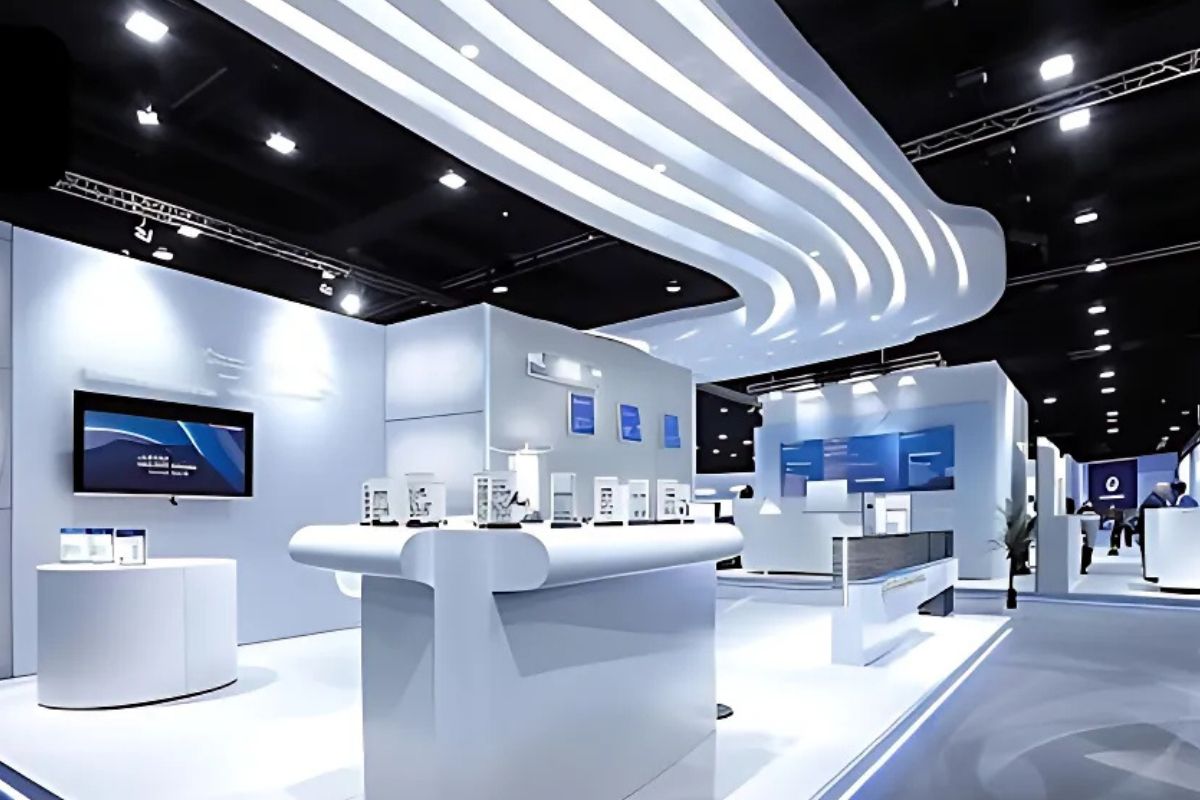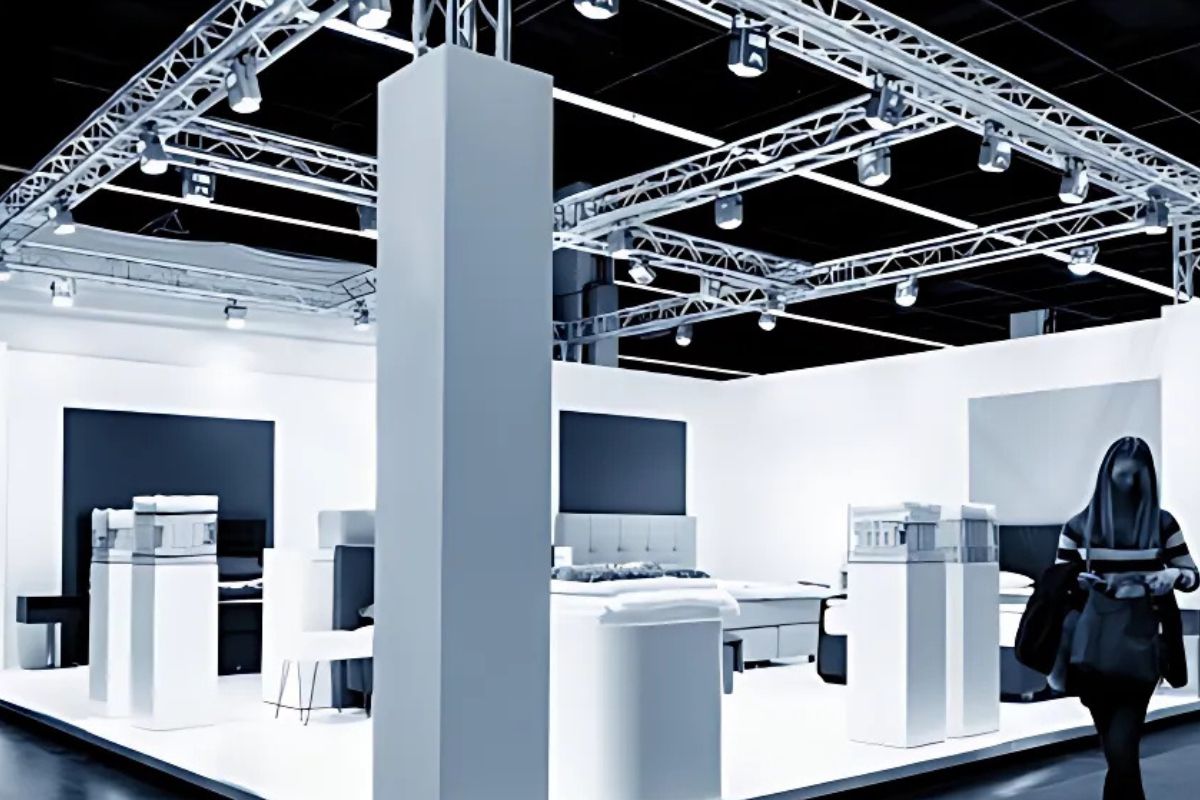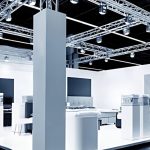Trade shows used to be great for visibility and networking. Recently, though, the way we design exhibits has changed a lot. Exhibitors are no longer merely taking space on a show floor because of the limited options available or the price they felt was fair. The booths now offer immersive, meaningful chances to connect with visitors. Some use technology to enhance these experiences. Exhibitors today prefer innovative and eye-catching booths over lightweight portable or island styles. Trade show exhibit companies assist organizations in adapting to the fast-changing marketplace.
Today’s successful designs reflect changing consumer expectations and brand presentation. Trade show exhibit companies now consider trends like sustainability, modularity, interactive technology, and storytelling. Exhibitors want their organizations to focus on engagement, efficiency, and form. They ask, “What will draw people to our booth?” “How can we use this space to show our brand?” As trends change, organizations must think about how design thinking applies. They should also look at the strategy model card to boost their presence and ROI.
The 5 Exhibit Design Trends Defining the Modern Trade Show Floor

Bold, Branded Experiences with Custom Trade Show Exhibits
The age of cookie-cutter trade show booths is long gone. Today, top brands are creating custom trade show exhibits. These exhibits show their identity, values, and messages. They are designed to tell a story. A custom booth lets a business share a strong, memorable story. It features brand architecture, selected lighting, and digital displays. These elements connect with the audience.
Why the desire for custom trade show exhibits? Because space is tight, the necessity to stand out is crucial. A custom design lets companies blend their brand elements, colors, graphics, and product displays. It creates unique experiences that standard trade show displays can’t match. It’s not about pretty things; it’s about what helps reinforce your brand narrative at a glance.
Portable, Modular Designs for Maximum Flexibility
Flexibility is an increasingly requisite characteristic in trade show design. Modular booths are becoming more popular. They are easy to assemble, take down, and reconfigure. This trend is especially strong among organizations that exhibit at several shows each year. These offerings are portable for trade shows. They also allow for creative customization.
The adaptability of modular systems is what makes them so appealing. Organizations can change their booth size up or down but retain a unified brand image. Many of the designs are now using lightweight materials and do not require tools for assembly. They allow small teams to manage the logistics of the exhibit quite easily.
Immersive Technology Integration
Technology-enhanced exhibits are not simply a novelty; they are an expectation. Touchscreens, virtual demos, augmented reality, and interactive LED walls make booths more engaging for attendees. Exhibitors are using digital tools not just for a wow factor, but also for storytelling and product education.
These changes show a bigger move toward personalization and engagement. They aren’t just about watching; they’re about taking part. By adding QR codes, mobile experiences, or live social media feeds, we turn a booth into an engaging platform. This creates digital conversations between the brand and attendees.
Sustainable Materials and Eco-Conscious Design
Sustainability is no longer a buzzword in exhibit design—now it’s a framework. More businesses now recognize the value of sustainable choices. This includes using recycled materials, energy-efficient lighting, reusable graphics, and shipping crates. This decision is great because it helps reduce our footprint on the planet. We also feel good about our choices. Plus, we can share these choices with more consumers and clients who feel the same way.
Bamboo floors, graphics made from recycled plastic, and rental parts support sustainability. We can do this while keeping quality high. This evolution is becoming easier. Exhibits often show brands’ commitment to sustainability. They also tell stories on the show floor.
Island Exhibits as Experiential Destinations
Island exhibits have become the standard format as brands look to expand their reach. Island exhibits provide great 360 abilities and also multiple areas to engage and interact with an audience. Island exhibits differ from inline and corner booths. They build small environments. These often have meeting rooms, product reps, and hospitality areas.
But the brand immersion possibilities are where the island exhibits shine. Theoretically and ideally, island booths can create a separate brand world with brand lighting, sound, color, and scent. If executed well, they will do much more than get noticed; they will engage your audience and your brand.
End Point
Trade show trends aren’t just about function anymore. Now, they focus on strategy, emotion, and experience. Booth design, whether a simple portable one or a complex island setup, is key to brand engagement. To stay ahead requires being adaptable, considerate, and courageous in your choices. Trade show floors are changing. Now, exhibits that mix creativity with purpose really stand out.











